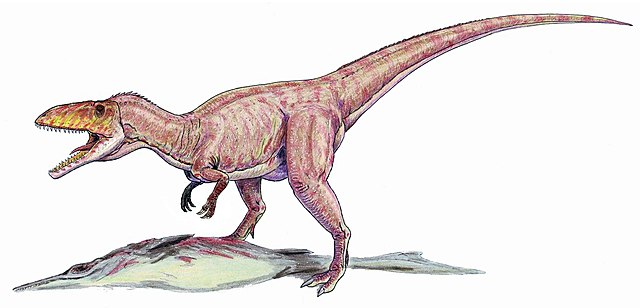The Oxford Clay is a Jurassic marine sedimentary rock formation underlying much of southeast England, from as far west as Dorset and as far north as Yorkshire. The Oxford Clay Formation dates to the Jurassic, specifically, the Callovian and Oxfordian ages, and comprises two main facies. The lower facies comprises the Peterborough Member, a fossiliferous organic-rich mudstone. This facies and its rocks are commonly known as lower Oxford Clay. The upper facies comprises the middle Oxford Clay, the Stewartby Member, and the upper Oxford Clay, the Weymouth Member. The upper facies is a fossil poor assemblage of calcareous mudstones.
Coastal exposure of the Oxford Clay Formation near Weymouth
Life restoration of Eustreptospondylus and Lexovisaurus in the Oxford Clay environment
Cetiosauriscus
Eustreptospondylus
The Jurassic is a geologic period and stratigraphic system that spanned from the end of the Triassic Period 201.4 million years ago (Mya) to the beginning of the Cretaceous Period, approximately 145 Mya. The Jurassic constitutes the middle period of the Mesozoic Era and is named after the Jura Mountains, where limestone strata from the period were first identified.
Portrait of Alexandre Brongniart, who coined the term "Jurassic"
Folded Lower Jurassic limestone layers of the Doldenhorn nappe at Gasteretal, Switzerland
Middle Jurassic strata in Neuquén Province, Argentina
Tidwell Member of the Morrison Formation (Upper Jurassic), Colorado








